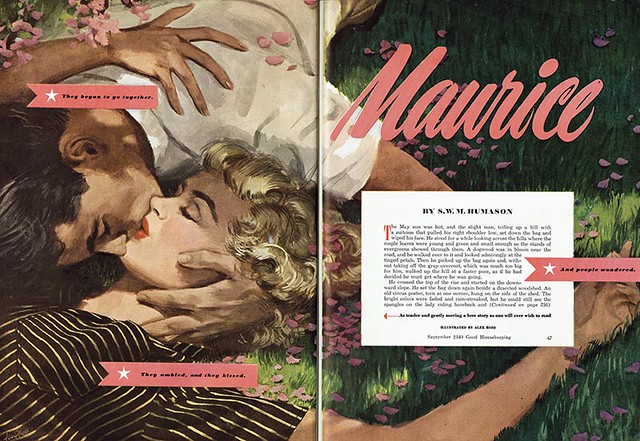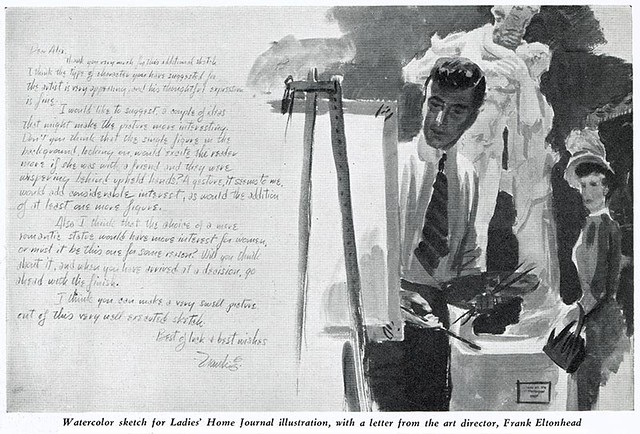
For artists like Alex Ross, this was fertile soil in which to plant the seeds of a successful illustration career.

After his first assignments for Good Housekeeping many more followed from the Saturday Evening Post, Collier's, Cosmopolitan, Redbook, Ladies Home Journal and all the rest. Ross had fairly burst onto the scene, handily proving he could paint compelling scenes of sweetness and light.

So it's not surprising that art directors quickly pigeon-holed him as a "boy-girl" romance artist. The money was good and the assignments plentiful...

... but Ross had other ambitions.

It took five years of accepting assignments from the Saturday Evening Post before the editors finally gave in to his pleas for something 'a little darker.'

Finally, in 1947, Ross was given his first mystery story to illustrate: Richard Powell's "Barracuda."

Ross said at the time, "I enjoyed it so much that the farther I got into the plot, the more nearly I forgot all about illustrating it."

"It took an effort to put down the manuscript and get busy painting."

Like most story and advertising illustrators of the day, Alex Ross would paint a 'rough sketch' version of his proposed artwork for client feedback...

Once approved, he'd organize a photo shoot so he'd have accurate reference to work from while rendering the finished artwork. Ross was an adherent of Robert Fawcett's philosophy that "intelligent friends are usually much better for modelling. They haven't been spoiled by acquiring that model's habit of mugging and grinning under all circumstances."

For the "Barracuda" series, Ross's younger brother, Clyde, posed as the hero.

His older daughter, Arlene (who, remember, was the model for her dad's first Good Housekeeping cover five years earlier) played the role of a girl in the story named Sherry. And Ross' friend and fellow illustrator, Wesley Snyder, portrayed the villain of the story.

Even as early as 1947, when he worked on the "Barracuda" series, Ross was becoming less reliant on photo reference. He made a habit of taking only a few shots to capture nuances of poses already worked out in his preliminary sketches. He was not yet ready to work entirely from imagination... but that day would come.

Because just as Alex Ross refused to be typecast by genre, he also would not be trapped by style, technique or medium. All were fair game to the restless artist, as we shall see... tomorrow.
Continued tomorrow










Post a Comment